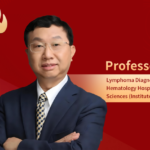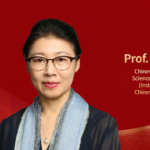Immunotherapy has recently emerged as a focal area in the research of hematologic oncology. The advancement of genetic engineering and molecular biology, coupled with deeper insights into the mechanisms of cancer, has led to the widespread clinical adoption of Chimeric Antigen Receptor T Cell (CAR-T) therapy. This approach has demonstrated remarkable efficacy in treating refractory or relapsed acute lymphoblastic leukemia, aggressive lymphomas, and multiple myeloma, significantly improving patient outcomes. However, challenges persist, notably in patients who do not respond to treatment, relapse shortly, or experience severe adverse reactions like cytokine release syndrome. The pursuit to mitigate the side effects of CAR-T therapy and enhance its long-term clinical effectiveness is ongoing, filled with both challenges and opportunities.
From January 5th to 7th, 2024, the 4th China Hematology Science Development Conference (CASH) opened in Tianjin. Professor Rong Fu of Tianjin Medical University General Hospital delivered an insightful lecture titled “Progress in the Study of Hematological Toxicity Related to CAR-T Therapy.” In an interview with “Oncology Frontier – Hematology Frontier,” Professor Fu discussed the latest findings in identifying and managing hematological toxicities associated with CAR-T therapy.
“Oncology Frontier – Hematology Frontier“: CAR-T has significantly altered the treatment landscape for many hematological malignancies. However, the associated toxic side effects are an issue that needs addressing. Could you share the recent key advancements in research on hematological toxicities related to CAR-T therapy?
Professor Rong Fu: CAR-T therapy has been in use for several years, earning widespread recognition for its positive impact on myeloma and lymphoma, bringing relief and improved survival to many patients. Alongside these benefits, the safety aspects of CAR-T therapy have become a critical focus. The primary concerns initially centered around two adverse reactions: Cytokine Release Syndrome (CRS) and Immune Effector Cell-Associated Neurotoxicity Syndrome (ICANS). With increasing clinical experience, these reactions have become more manageable. Additionally, hematological toxicity is a prevalent adverse reaction, mainly manifesting as a reduction in blood cells. This toxicity can be classified into three types: early onset within 30 days post-treatment, short-term toxicity between 30 to 90 days, and persistent hematological toxicity occurring after 90 days, which is particularly challenging to manage. Persistent hematological toxicity, accounting for 15-20% of all cases, should be a focus for hematologists.
“Oncology Frontier – Hematology Frontier“: How can hematological toxicities associated with CAR-T cell therapy be identified and managed?
Professor Rong Fu: Before addressing the management of hematological toxicity post-CAR-T therapy, it’s essential to understand its underlying mechanisms. Factors contributing to hematological toxicity include the patient’s baseline condition and previous treatments, like high-dose, multi-course cytotoxic drug therapies. Other factors include a high inflammatory response state, including severe CRS, and hemophagocytic syndrome or macrophage activation syndrome triggered by CAR-T cells activating the immune system. Blood cell reduction can also result from impaired humoral immunity, as many patients experience reduced B cell count or dysfunction post-treatment, sometimes lasting over a year. Additionally, reduced CD4 count and impaired cellular immunity can lead to decreased blood cells.
Understanding the pathogenesis of CAR-T-induced hematological toxicity requires more research. Both hematologists and bone marrow failure experts should explore the mechanisms behind post-treatment blood cell reduction. Currently, management of blood cell reduction post-CAR-T therapy primarily involves supportive treatments, like blood component transfusion or the use of
Granulocyte Colony-Stimulating Factor (G-CSF), Erythropoietin (EPO), and Thrombopoietin (TPO) receptor agonists. If a patient develops hemophagocytic syndrome, treatments such as dasatinib, IL-6 receptor inhibitors like tocilizumab, and interferon-gamma inhibitors are considered. Tailoring specific treatments to individual cases is crucial. For example, in our department, we treated a patient with persistent blood cell reduction for over 100 days post-CAR-T therapy using hematopoietic stimulants along with the immunosuppressant sirolimus, which led to the restoration of the patient’s blood count. This patient has been in remission for several years now. Another patient with diffuse large B-cell lymphoma underwent a challenging treatment for blood cell reduction but demonstrated the long-term efficacy of CAR-T, remaining relapse-free.
“Oncology Frontier – Hematology Frontier“: What other significant content from this conference can you share with us?
Professor Rong Fu: A highlight of this conference was the discussion of the positive effects of CAR-T therapy. For example, a clinical trial led by Professor Qiu Lugui on domestically produced CAR-T targeting B Cell Maturation Antigen (BCMA) enrolled over 100 patients. The 18-month follow-up showed impressive results, with an Objective Response Rate (ORR) of 99% and a Complete Response (CR) rate exceeding 80%. Moreover, 80% of the patients achieved minimal residual disease (MRD) negativity for over 12 months. These results are particularly encouraging, considering the trial primarily involved patients who had undergone multiple lines of treatment. The success of CAR-T in treating refractory/relapsed diseases underscores its potential as a key direction in the future of hematologic cancer immunotherapy. Both clinical trial and real-world data suggest that CAR-T may play a significant role in the future of hematologic malignancy treatment.
In managing CAR-T therapy, it’s imperative to focus comprehensively on both its positive effects and adverse reactions. A well-rounded management approach is essential to ensure patients benefit from effective treatment while minimizing the risk of severe complications like blood cell reduction.

Professor Fu Rong
- Medical Doctor, Chief Physician, Secondary Professor, Doctoral Supervisor
- Vice President of Tianjin Medical University General Hospital, Director of the Hematology Center
- Committee Member of the Hematology Branch of the Chinese Medical Association
- Committee Member of the Physician Branch of the Chinese Medical Association Hematology
- Deputy Group Leader of the Red Blood Cell Group of the Hematology Branch of the Chinese Medical Association
- Coordinator of the PNH Collaboration Group of the Hematology Branch of the Chinese Medical Association
- Chairman of the Red Blood Cell Disease Special Committee of the Beijing Cancer Prevention and Control Association
- Vice Group Leader of the Chinese MDS/MPN Working Group
- Committee Member of the Clinical Oncology Special Committee of the Chinese Female Physician Association
- Committee Member of the Health Exchange Association between the Two Sides of the Taiwan Straits Hematology Expert Committee
- Committee Member of the Hematology Branch of the Chinese Medical Association Institutions Sub-branch
- Chairman of the Tianjin Medical Association Hematology Branch
- Vice President of the Tianjin Physician Association Hematology Physician Branch
- Co-Editor-in-Chief of the Journal of Clinical Laboratory Analysis
- Deputy Editor-in-Chief of the Chinese Journal of Hematology
- Tianjin Medical Talent, First Tianjin Famous Doctor, Tianjin Teaching Excellence Award Winner
- Author of “Chinese Expert Consensus on Aplastic Anemia,” “Chinese Expert Consensus on PNH,” and “Chinese Expert Consensus on Pure Red Cell Aplastic Anemia”


